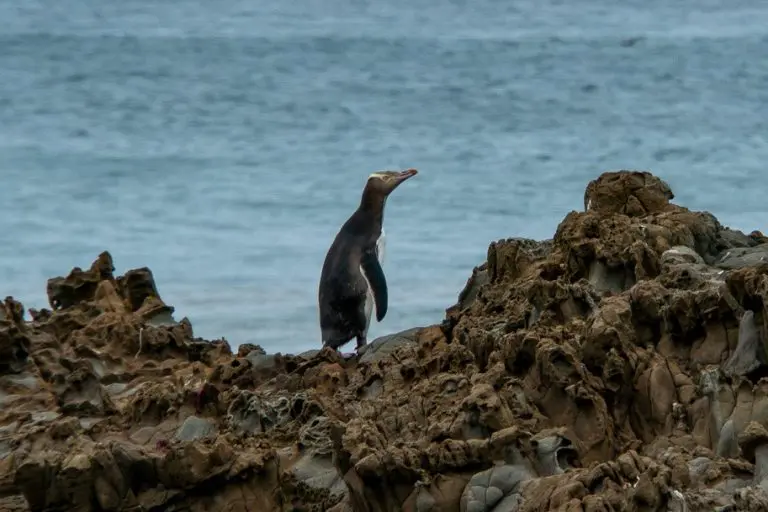Words by Wednesday Davis BLAKE DOC Ambassador – Hoiho (Yellow Eye Penguin) and Pakake (NZ Sealion)
Kia ora! Ko Wednesday toku ingoa. Nō England ōku tīpuna. I tipu ake au ki Tauranga, e noho ana au kei Tāmaki Makaurau. Kia Ora! My name is Wednesday, and I am one of this year’s BLAKE Ambassadors.
I am currently a Master’s of Science student at the University of Auckland researching the behavioural drivers of multi-species feeding aggregations in The Hauraki Gulf – Tīkapa Moana – Te Moanaui-ā-Toi. Under the supervision of 2018 BLAKE leader Associate Professor Rochelle Constantine, I use drones, artificial intelligence and on-board behavioural observations to research the fine-scale interactions between cetaceans, seabirds and their prey within ocean workups. I am an avid diver, adventurer and explorer and love spending my free time above and below our big blue backyard.
This summer, Giverny Forbes and I spent two weeks in Dunedin with the Department of Conservation (DOC) and one week in the Catlin’s with the Yellow-Eyed Penguin Trust (YEPT) helping with this year’s hectic hoiho (yellow-eyed penguin) and pakake (NZ sealion) monitoring season.
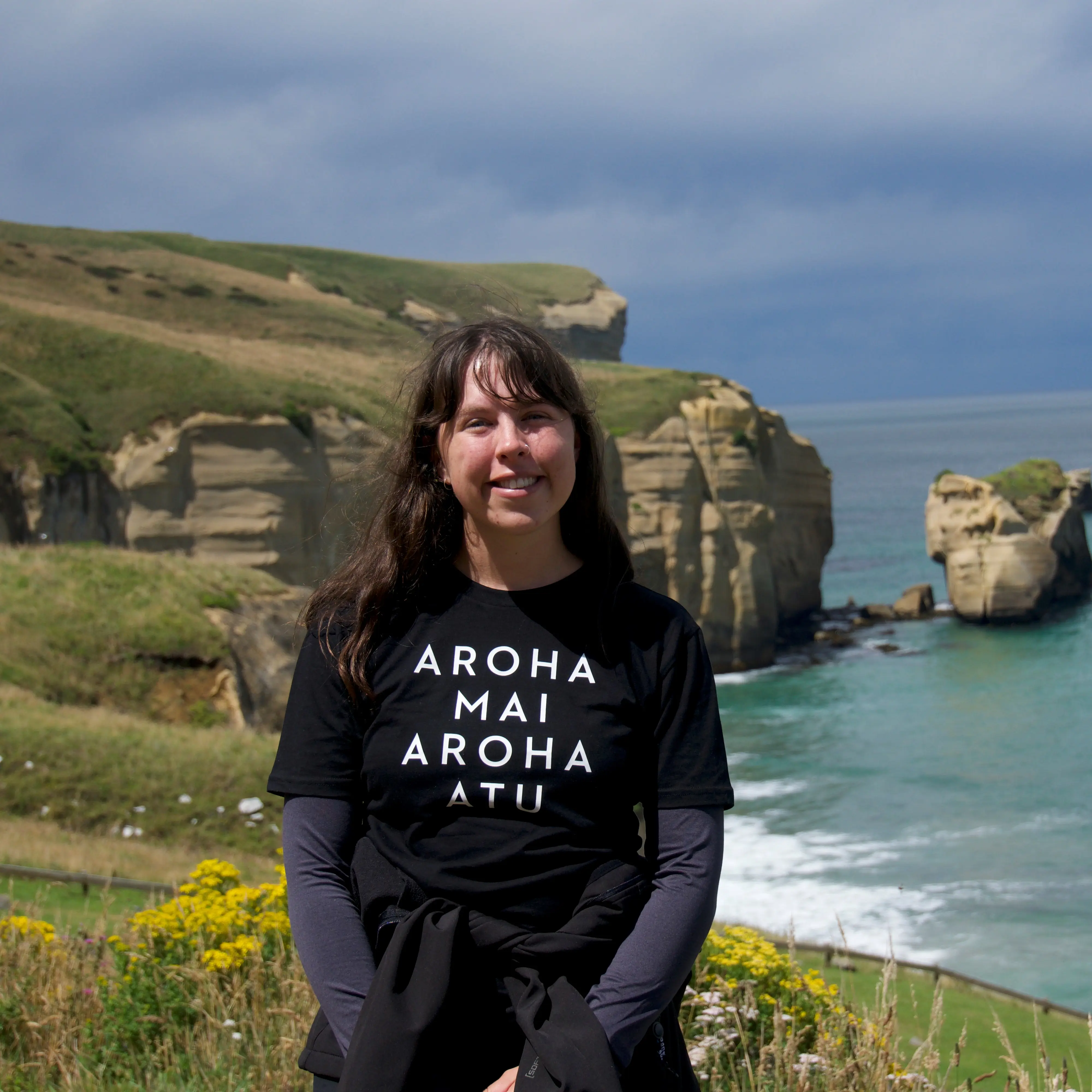
BLAKE DOC Ambassador Wednesday Davis at Dunedin’s Tunnel Beach.
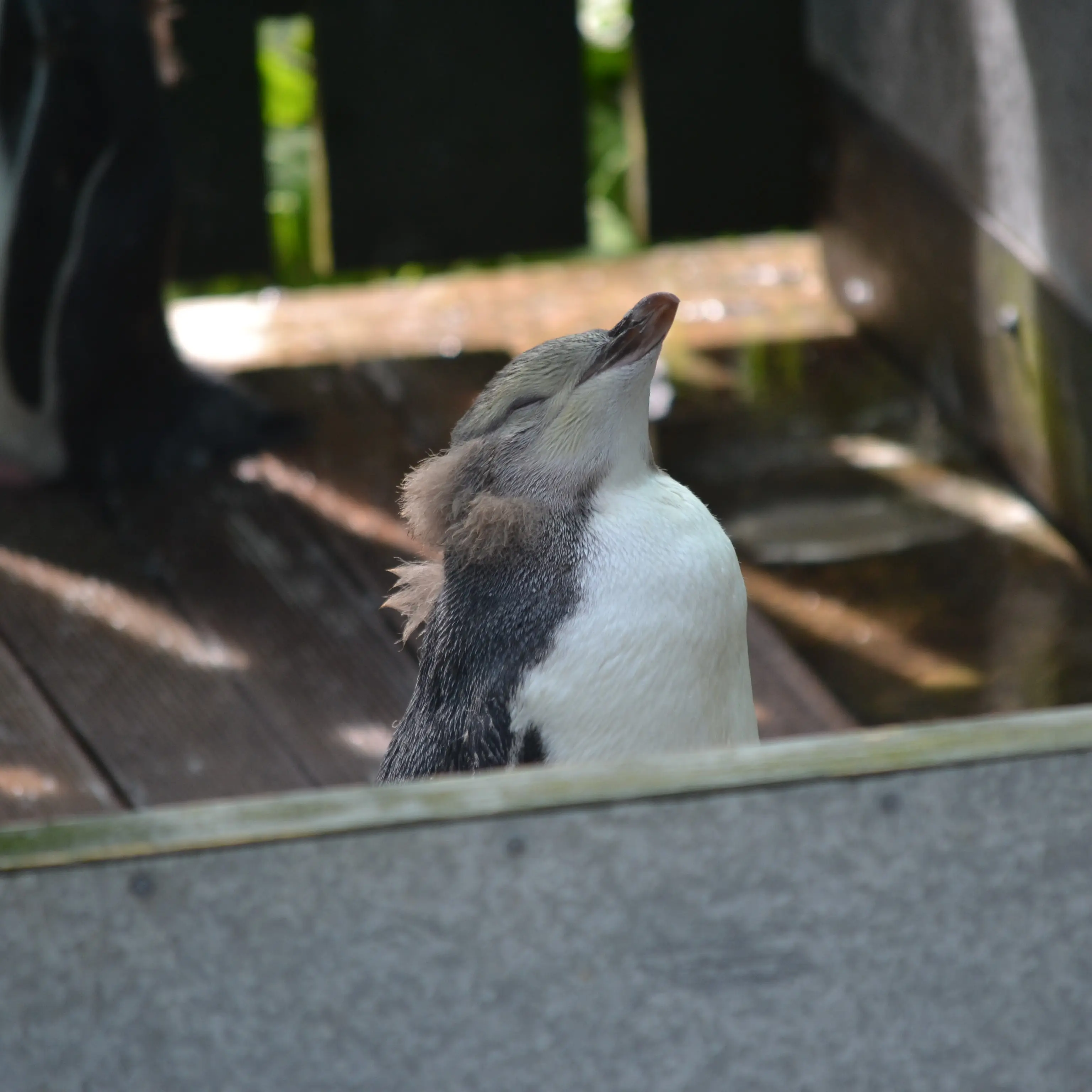
A Hoiho chick at the rehab centre Penguin Place, Dunedin.
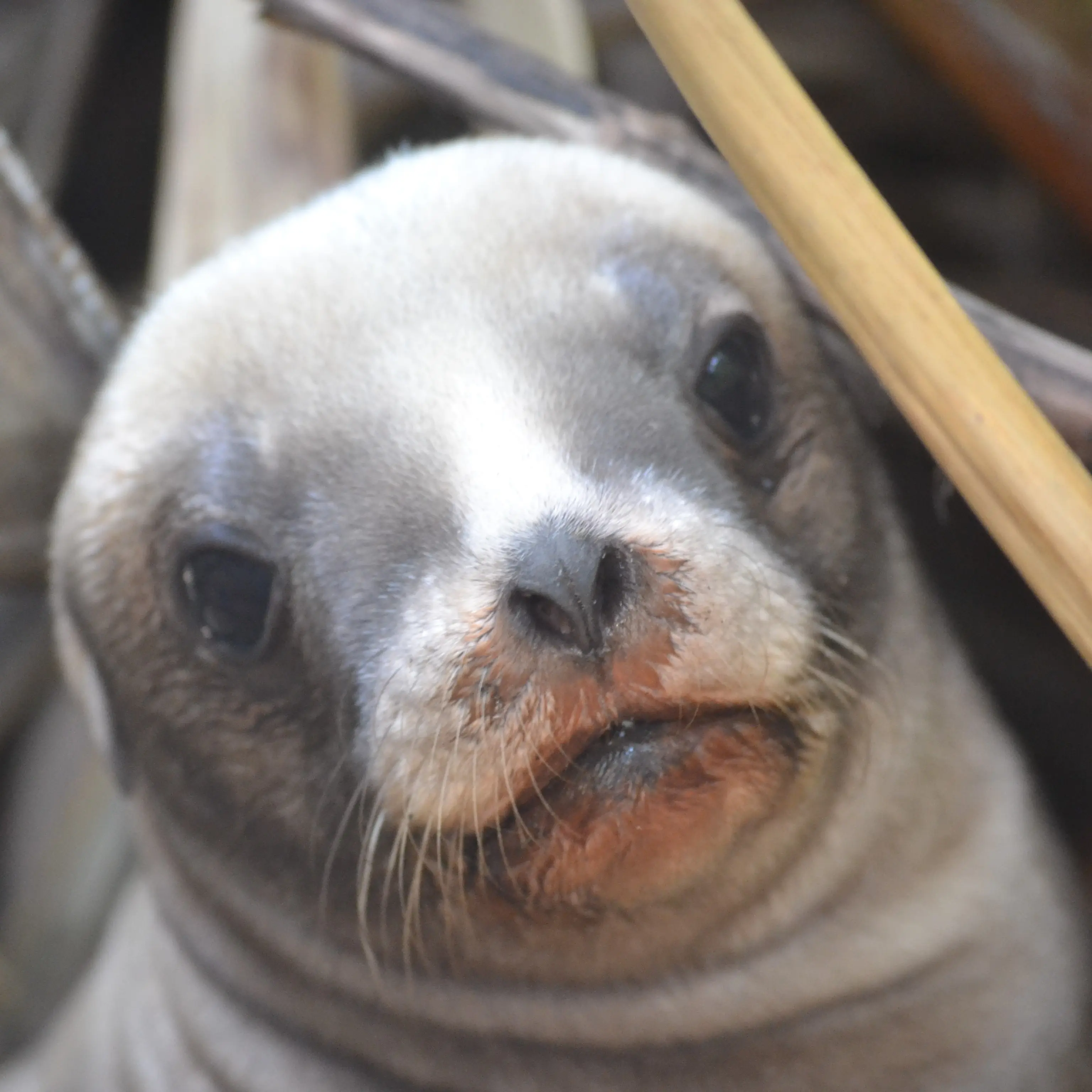
A young sea lion pup (fondly nicknamed Blake by Giverny and Wednesday) in Coastal Otago.
In Dunedin, we worked alongside DOC coastal rangers Jim and Megan to learn a bit more about hoiho (yellow-eyed penguins) and pakake(NZ sea lions) in the coastal Otago area. We joined them in the field, getting a unique hands-on experience and got up and close with some pretty impressive critters including hoiho chicks, -pakake pups and plenty of kekeno!
One of my favourite experiences from this trip was helping to tag a gorgeous ~ two-week-old sea lion pup who Giverny and I fondly nicknamed Blake. Each season, sea lion pups receive health checks, flipper tags and microchips – these allow the rangers to identify individual sea lions and monitor population changes. While sea lions once spanned the entire coastline of New Zealand, they were reduced to just the sub-Antarctic Islands following intense harvesting and culling in the 1800’s. As their population recovers, the sealions are returning to mainland New Zealand. It is important to know who each sea lion is to monitor the health of the population and changes in their spatial range over time. Checking out where the sea lions are hiding their pups also allows rangers to work alongside Dunedin City Council to help manage the public through signage and road closures – reducing potential harassment to mama sea lions and pups by people and dogs.

A young kekeno (NZ fur seal) pup spotted in the Catlin’s.
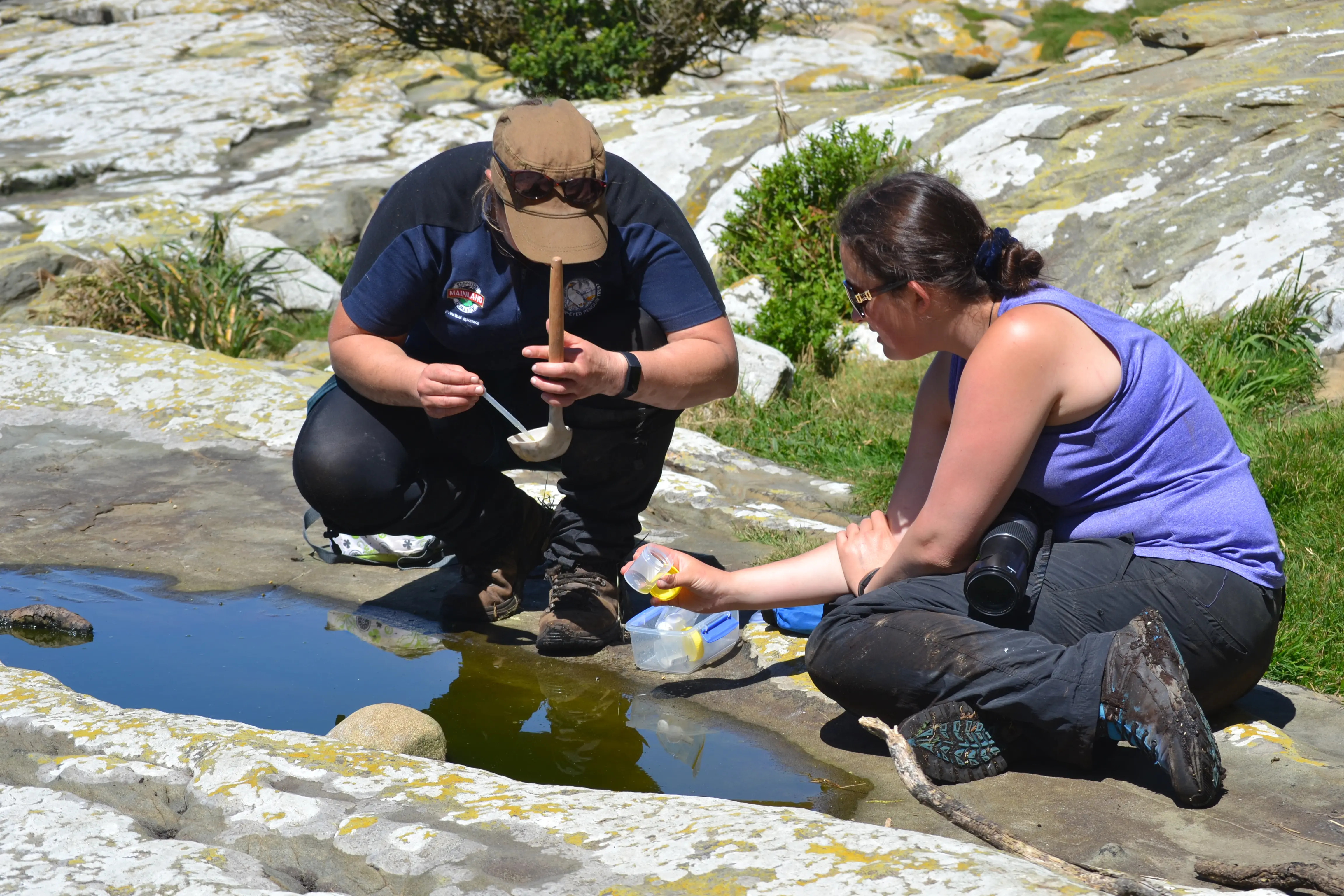
Giverny Forbes helps to collect mosquito samples to test for avian malaria near hoiho nest sites in the Catlin’s.
However, while the sea lion population is slowly increasing, the hoiho are slowly declining. Reduced habitat availability, land predators, disease, overfishing of prey and bycatch risk are just a few of the impacts facing this critically endangered seabird. With only 200 left on mainland New Zealand and 2000 on sub-Antarctic islands, it is more important than ever to protect these seabirds. In Dunedin, we helped conduct nest checks, health checks on the chicks and even got to help transport a sick penguin from the wild to the rehab centre – Penguin Place! Like the sea lions, we helped to microchip and flipper band several chicks, allowing them to be easily identified when they return next season as juveniles!
In the Catlins, we worked alongside YEPT ranger Sarah to help with the 2020/21 hoiho season! We joined Sarah in the field, getting a unique hands-on experience and got up and close with some of the local hoiho chicks! The Catlin’s is a stunning area of the South Island and hosts a huge range of biodiversity, including plenty of hoiho, kekeno and pakake! It’s rocky cliffs, and sandy beaches made some pretty stunning monitoring sites!
While in the Catlin’s, we helped with a range of activities including weighing penguin chicks, recording health and microchip numbers, sampling and treating mosquitos in puddles and maintaining replanting areas! We learnt lots of new and exciting things while in the Catlin’s including how to search for mounting adult and juvenile penguins! While no penguins were banded or tagged on this trip, we helped set up trail cameras (small cameras which take photos when detecting movement) to check on the elusive parent penguins and check they were coming in to feed their chicks.
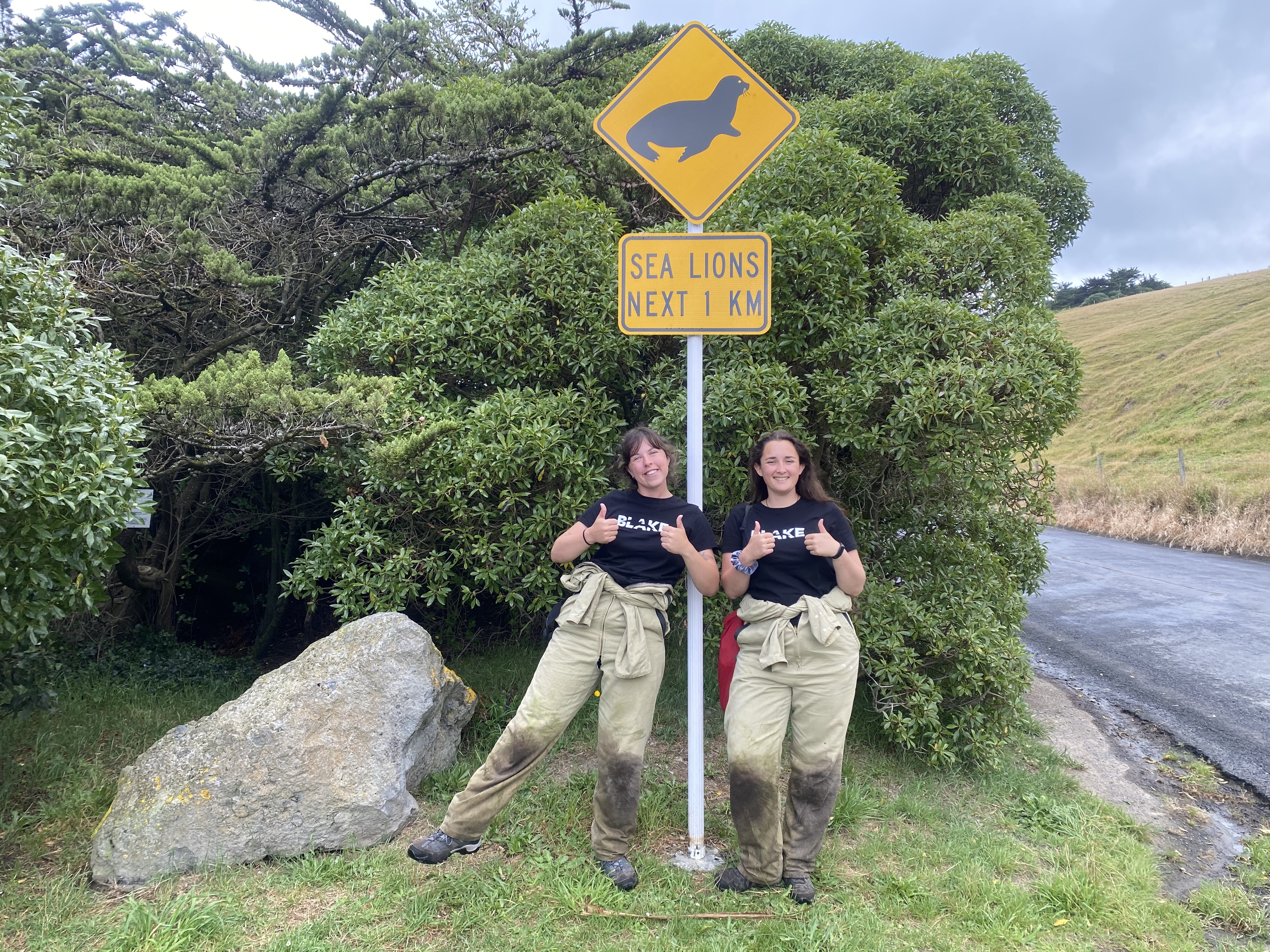
Wednesday Davis (L) and Giverny Forbes (R).
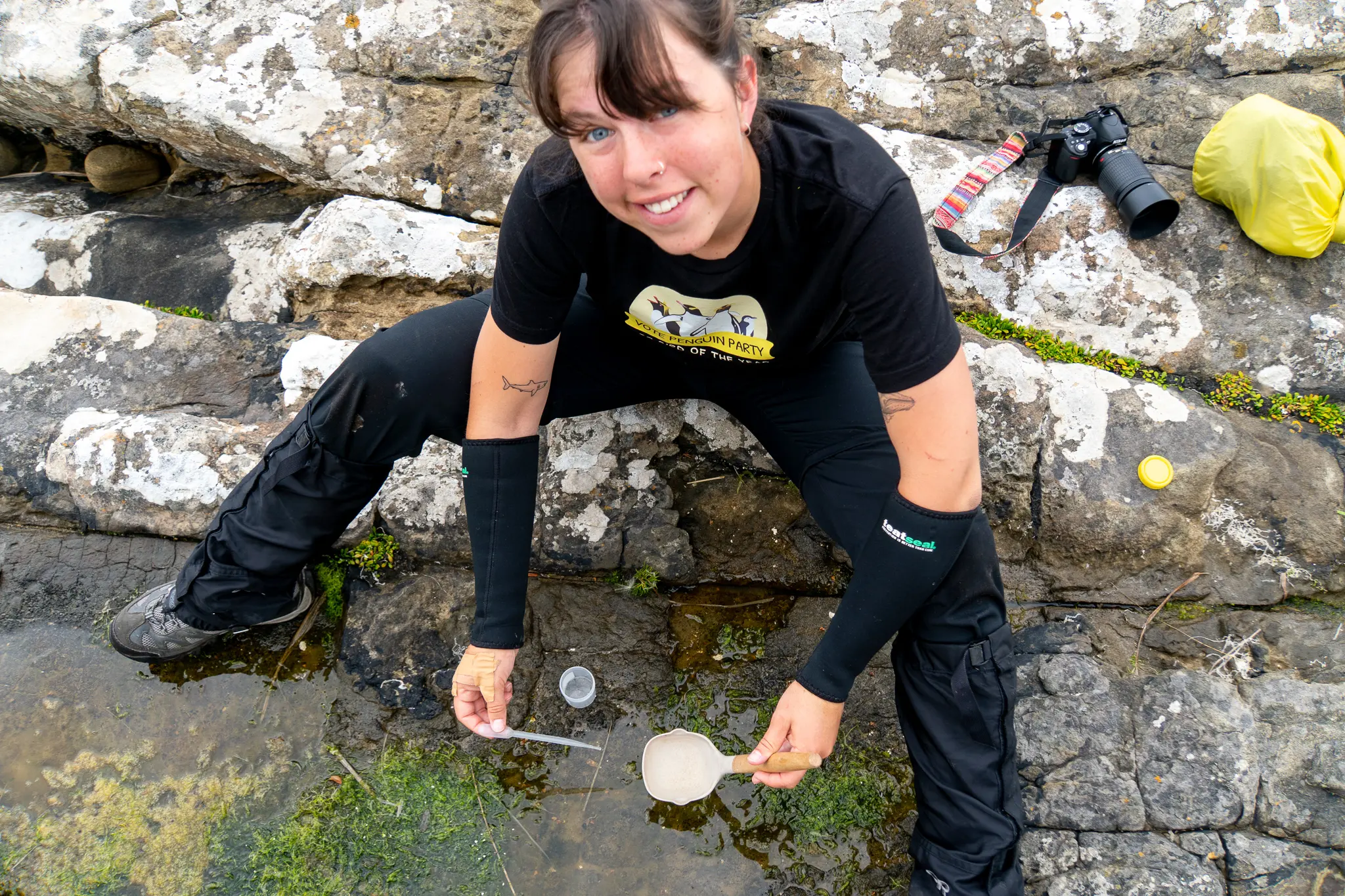
Mosquito sampling to test for avian malaria.
Unfortunately, on our trip we also met a few underweight and injured penguins, these were sent to Penguin Place and the Wildlife Hospital Dunedin respectively to be cared for until they are well enough to be released back into the wild. We also met a lovely volunteer who helped drive the penguins to the rehab and hospital centres, allowing us to carry on with our monitoring work without a long drive to Dunedin! One of my favourite experiences of our time with YEPT was helping to rescue an injured parent penguin with a severe foot injury; if we had not found this penguin it likely would not have been able to forage, feed its chicks and protect the chicks from potential predators. This rescue was a really fulfilling moment of the ambassadorship as we likely saved that penguins life and the life of its two chicks.
One of the biggest things I learnt while on my ambassadorship was the importance of community in the monitoring and surveillance of these critical species. It is the public, and community’s responsibility to give animals space and avoid harassing or disturbing them and report sightings of sick and injured wildlife to help DOC rangers find critters that need our help. As these species, particularly sea lions, recover, we need to learn how to coexist alongside them and reduce disturbance, predation and injury risk where possible. It takes a team to look after our species, and we can all do our part to help these species recover, through reducing our carbon footprint, reducing our plastic consumption and following all signs, rules and recommendations around interacting with wildlife.
Can’t wait to see what the rest of 2021 brings!
Important note: All photos and interactions with wildlife were done under the permission and guidance of DOC and YEPT. New Zealand’s native species are unique, precious and fascinating. It is important to respect wildlife, give them space (at least 50m is ideal) and avoid disturbing, stressing and harassing animals at all times.
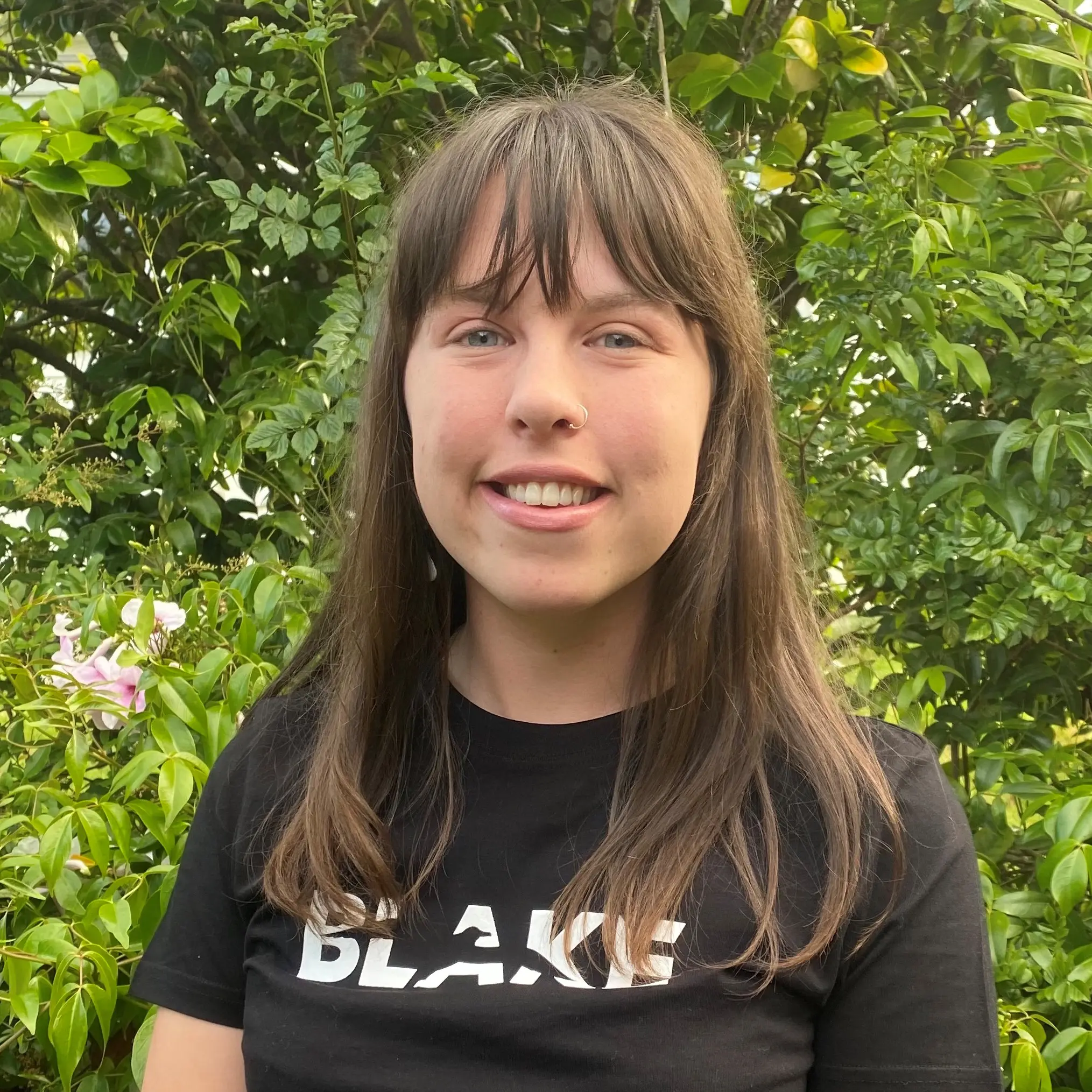
Wednesday Davis
BLAKE DOC Ambassador 2020
